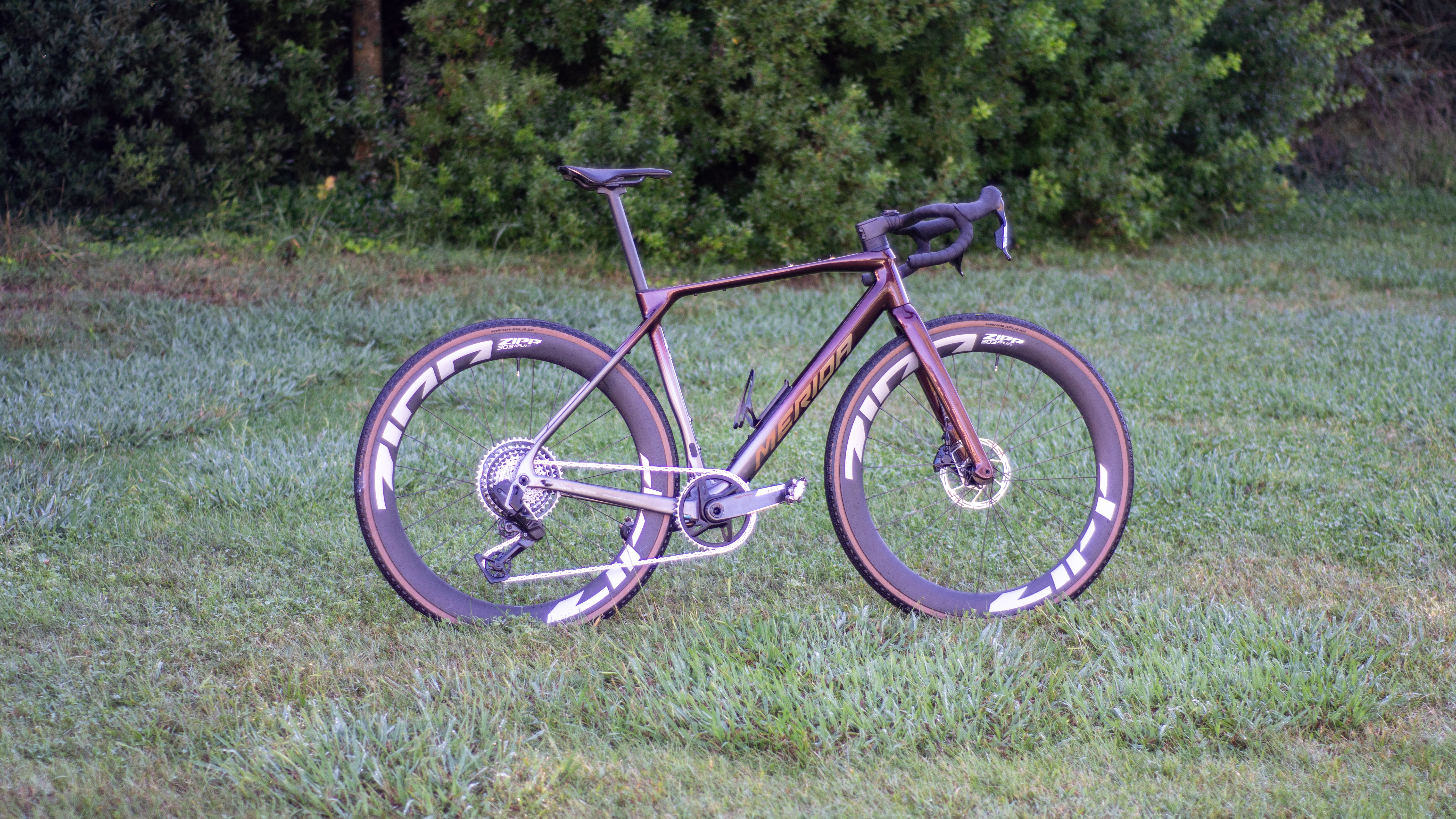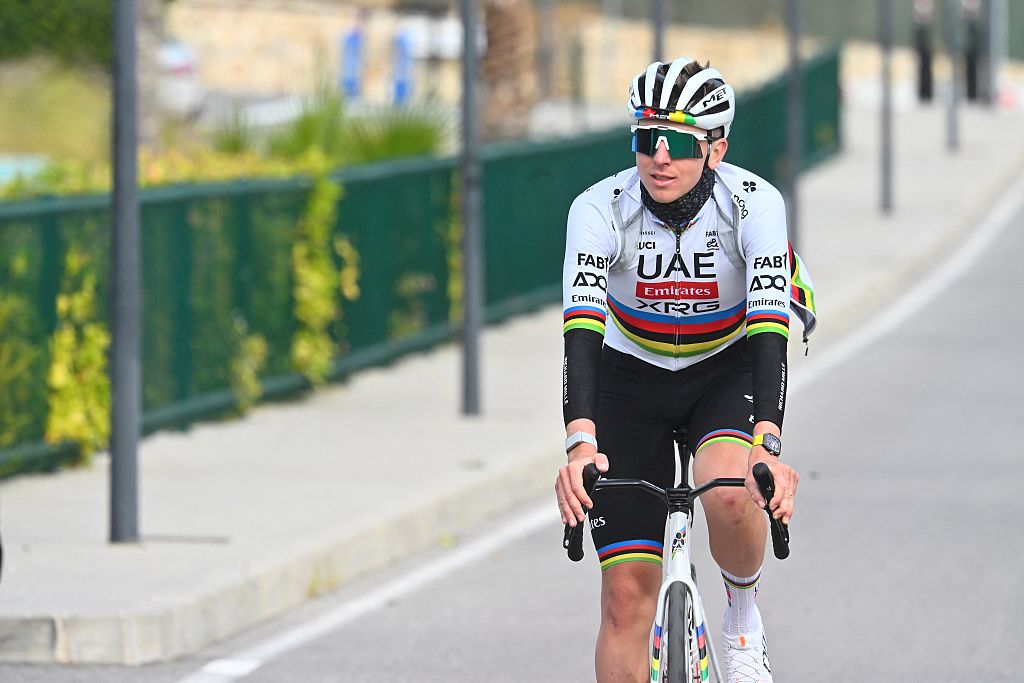Early Verdict
The Mission is a fast, fun bike to ride, that's also great looking, but I think another set of wheels and tyres may be needed to get the very best out of it. In this stock build, it's vulnerable on rocky, fast descents.
Pros
- +
Aggressive styling
- +
Comfortable, user-friendly geometry
- +
Fast feeling and exciting to ride
- +
Great integrated handlebars
Cons
- -
40mm clearance is limiting and arguably outdated already for gravel bikes
- -
The stock rim and tyre combination is unsuited to certain terrain
You can trust Cyclingnews
Until now, the Merida gravel range has comprised two gravel bikes - the Silex and the Scultura Endurance GR model.
Despite being billed as a more comfortable, adventure-ready machine, the Silex was ridden to a world gravel title by WorldTour road ace Matej Mohoric in late 2023, at the second-ever gravel worlds.
Now, the new Merida Mission is here. It's an all-out gravel race machine that has been ridden by Mohoric to third place at this year's gravel world championships.
The Mission is speed and race-focused, with racy looks and geometry that is similar to endurance or all-road road bikes. You can read about the new bike's details in our Mission news piece.
It also has less tyre clearance than the Silex at 40mm. Merida has gone against the grain somewhat here and reduced tyre clearance, not boosted it, which is the direction of travel for lots of brands right now.
It's certainly not a part of the latest raft of gravel race bikes with large tyre clearances, such as the Fara Gr4 or the Allied Able. No, Merida claims it has drawn inspiration for the Mission from road and cyclocross machines and 'fast Euro gravel racing'.
I attended the Mission launch myself in Girona, Spain, in September to test the bike on some popular Girona gravel.
The latest race content, interviews, features, reviews and expert buying guides, direct to your inbox!
The Mission was a very engaging and exciting bike to ride, but I came away thinking hard about what truly makes a fast gravel race bike.
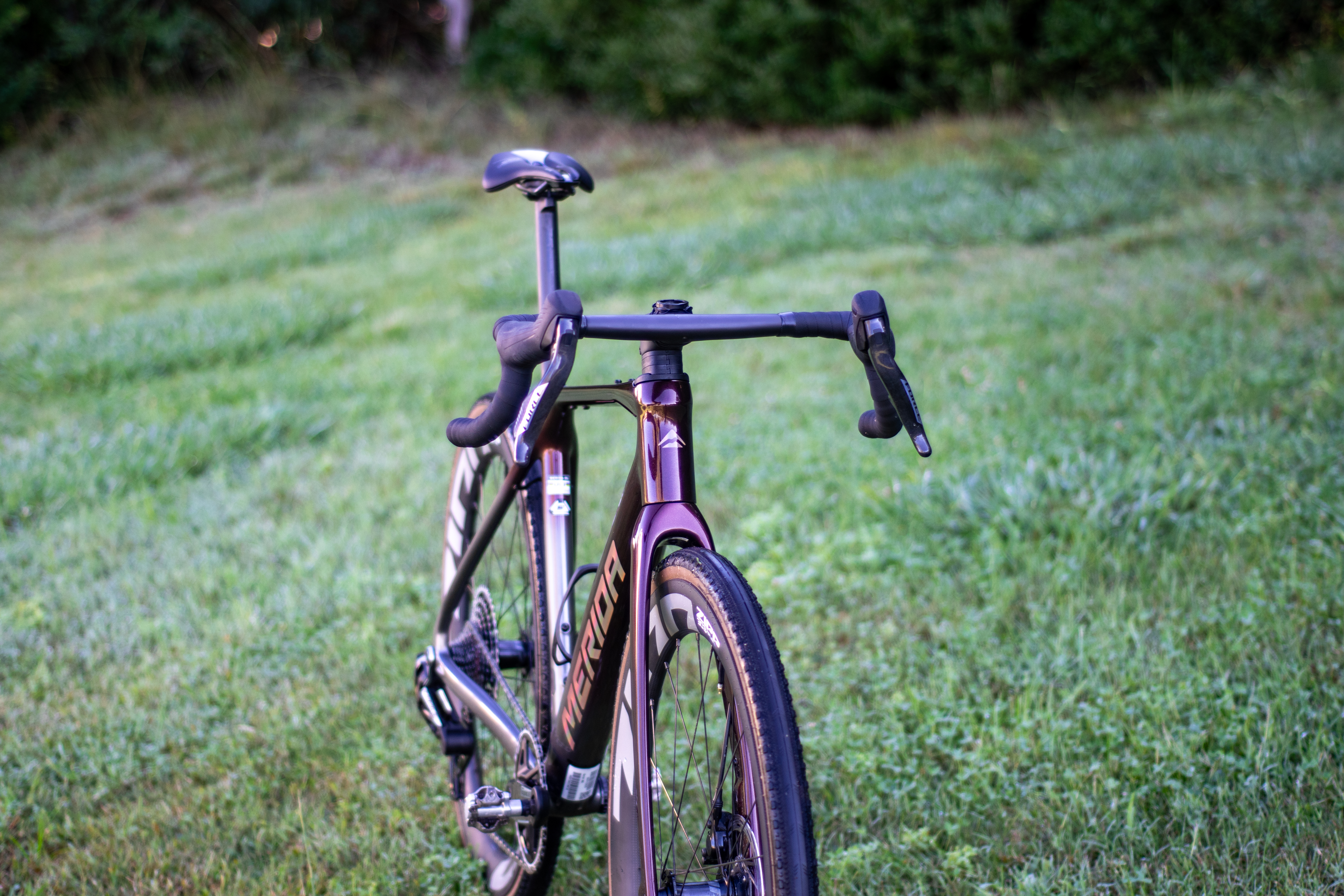
Design and Aesthetics
The Mission is designed to sit between the Scultura Endurance GR and Silex gravel bikes in the Merida range.
This definitely isn't a gravel machine with large tyre clearance and a focus on letting you tackle rough off-road terrain with pace. According to the brand, the design inspiration for the Mission is drawn from the road-like Scultura Endurance GR bike.
According to Merida, it's been designed and specced for fast gravel riding and 'speed-oriented gravel riders', including professionals from Bahrain Victorious like Mohoric, who want a fast-feeling road bike-like gravel machine.
The Mission is built around a carbon fibre CF4 frame, which all five Mission models use. The frame weighs a claimed 1100 grams for a Medium, whilst the fork comes in at 500 grams.
I don't have any aero or CFD modelling info on the bike to share, but the frame profiles have some more aerodynamic-looking profiles compared to the Silex at the very least.
Tyre clearance is going to be a talking point, with clearance at 40mm for a bike billed as a gravel race machine. Merida didn't want to drop the seatstays or chainstays for this bike to increase tyre clearance, nor did it want to lose the ability to fit a double chainset, which is impacted by larger-sized tyres, so 40mm it is.
You might be able to sneak some larger tyres onto the bike, but the brand explained they adhered to ETRTO rim/tyre combo guidelines; clearance will be getting pretty tight, especially in muddy conditions with bigger rubber.
You could argue we are almost at an all-road bike here with gravel tyres fitted to it, but I have to respect the fact that this for Merida is a gravel machine. You could easily put 30-40mm road tyres on this bike and have a great time on the road. The bottom line is this is a fast gravel machine that is best suited to light gravel and tarmac riding.
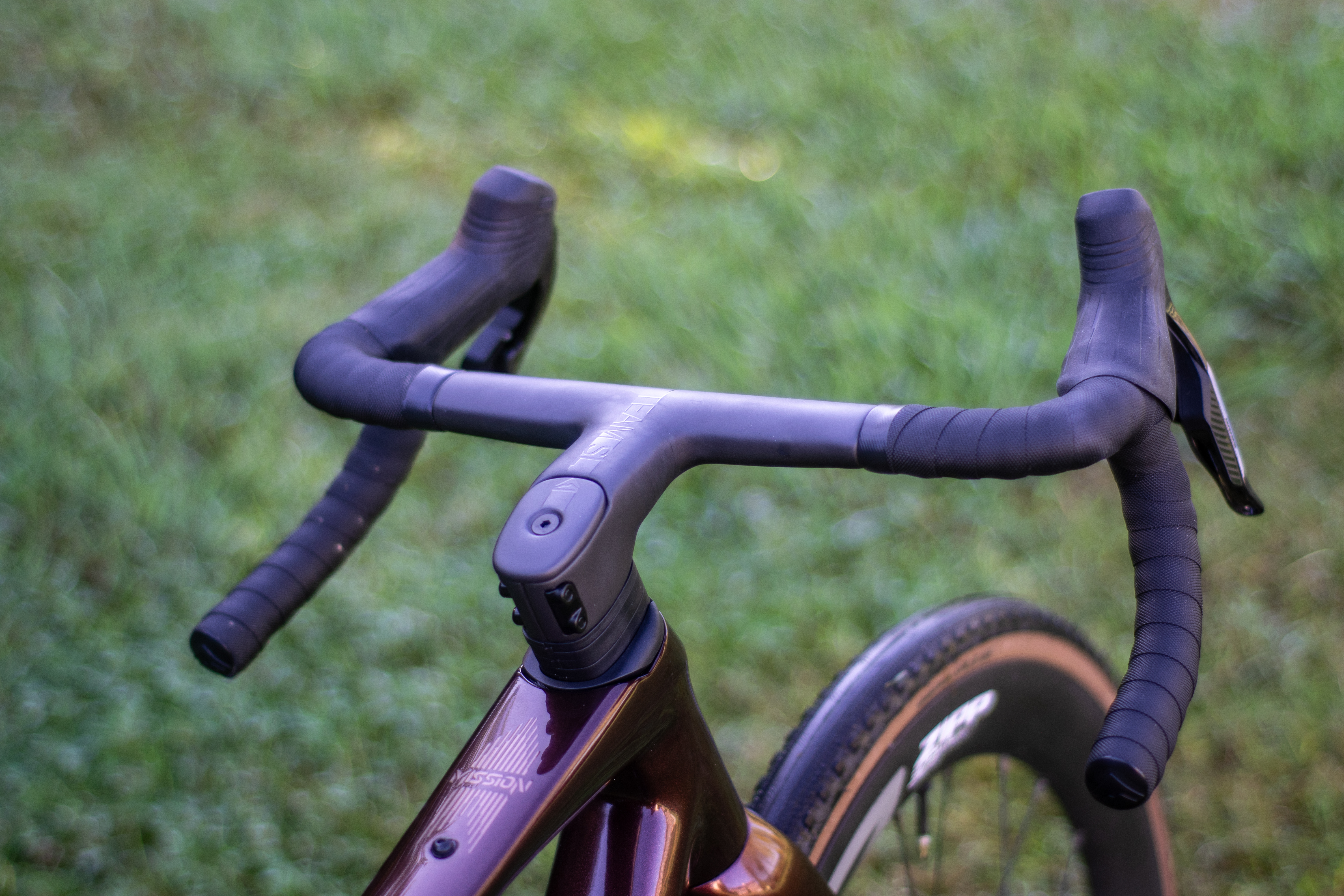
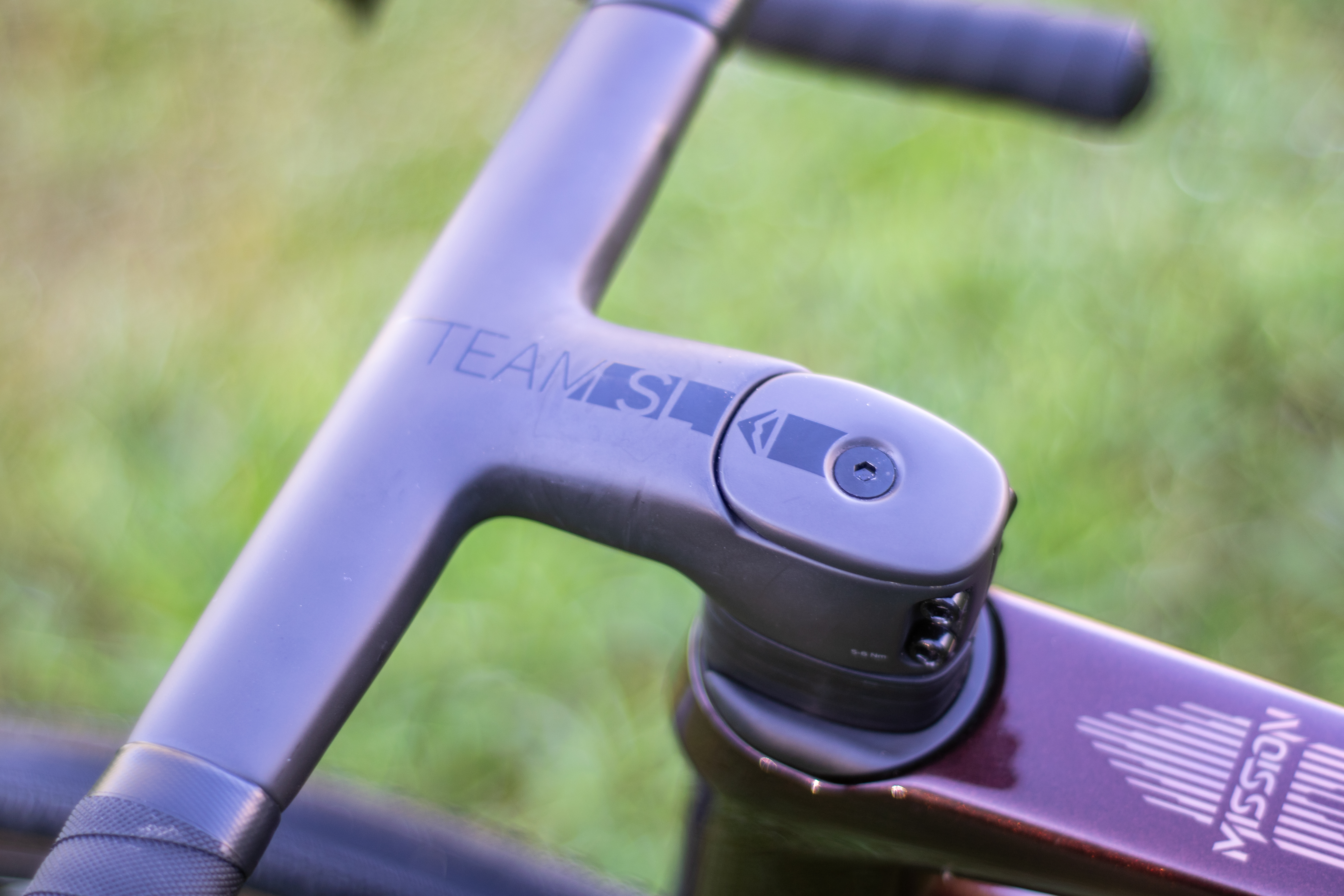

There is a downtube storage compartment on the Mission frame; most brands seem to have an acronym for their frame storage these days, including Merida. The brand has named its version 'G.U.T. storage', which stands for 'Gear, Useful, Things'. The compartment is opened with a fidlock catch.
There are mounts for a top tube bag on top and a trio of bottle cage mounts in the main triangle, as well as mudguard mounts (you can see the rear removable bridge in my pictures), which seem slightly at odds with the racy credentials, but it's nice to be able to fit them if needed. I'm told Merida has designed their own fenders. Though there are a lot of neat clip-on options to go for as well.
The Mission also features Merida's disc brake cooling system; aluminium cooling fins which are bolted in front of each brake caliper and designed to draw heat away from the caliper, Merida claims by up to 35 degrees.
I don't mind the look of them at any rate, and they do offer some protection for the callipers from scratches at least. Could they have been omitted to save weight for this gravel race machine? I can't say I've ever overheated any road or gravel brakes, but I'm not a heavy rider.
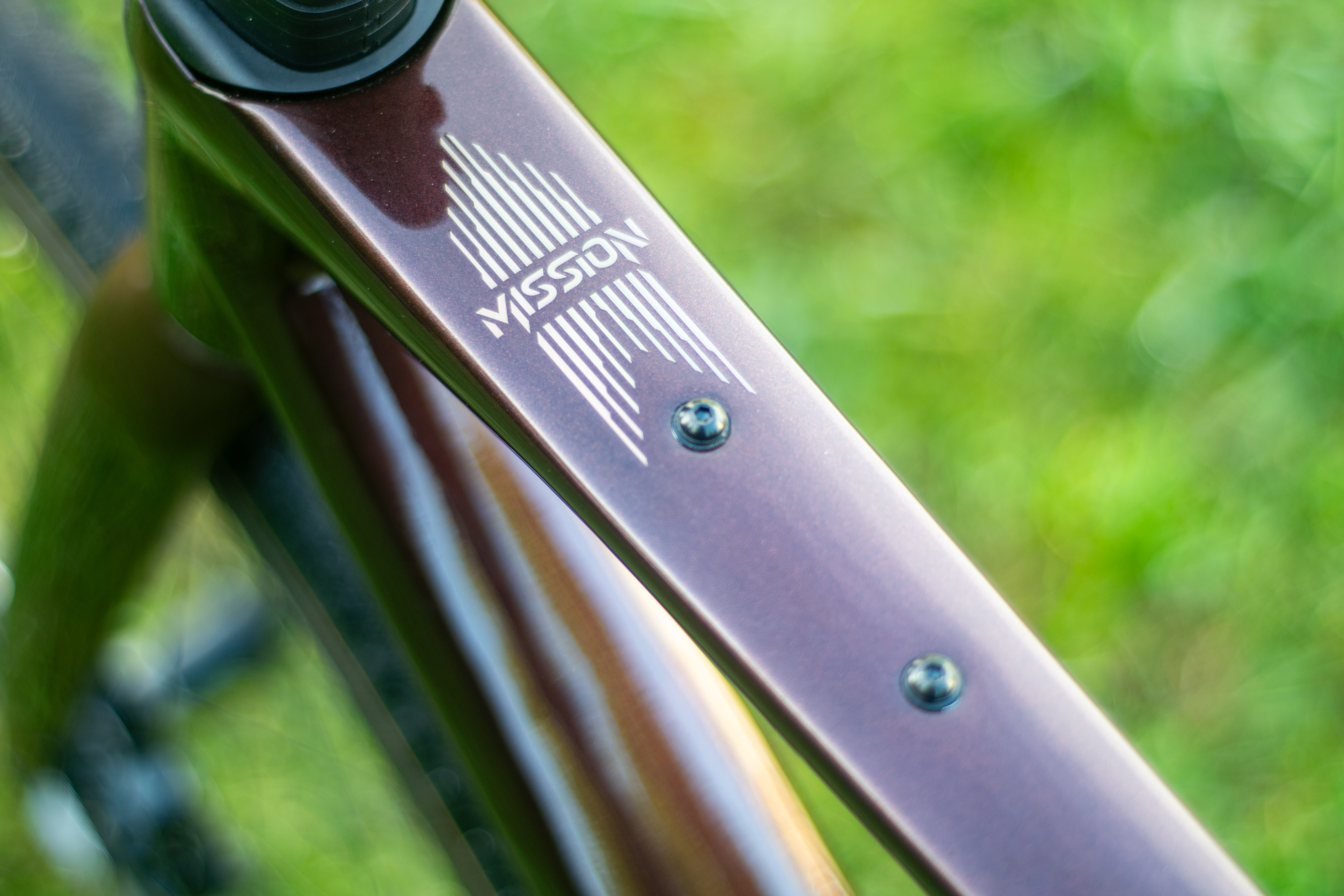
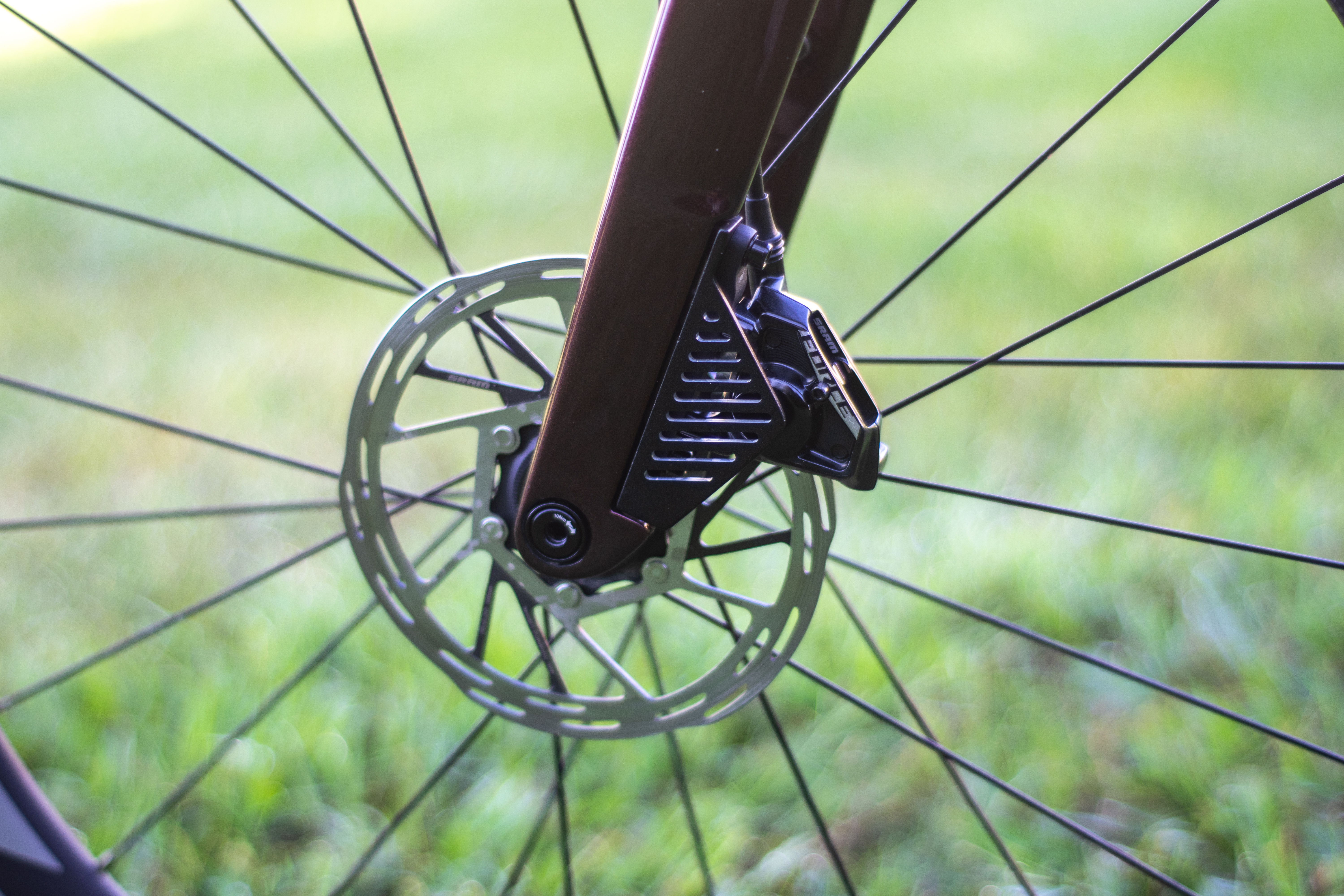
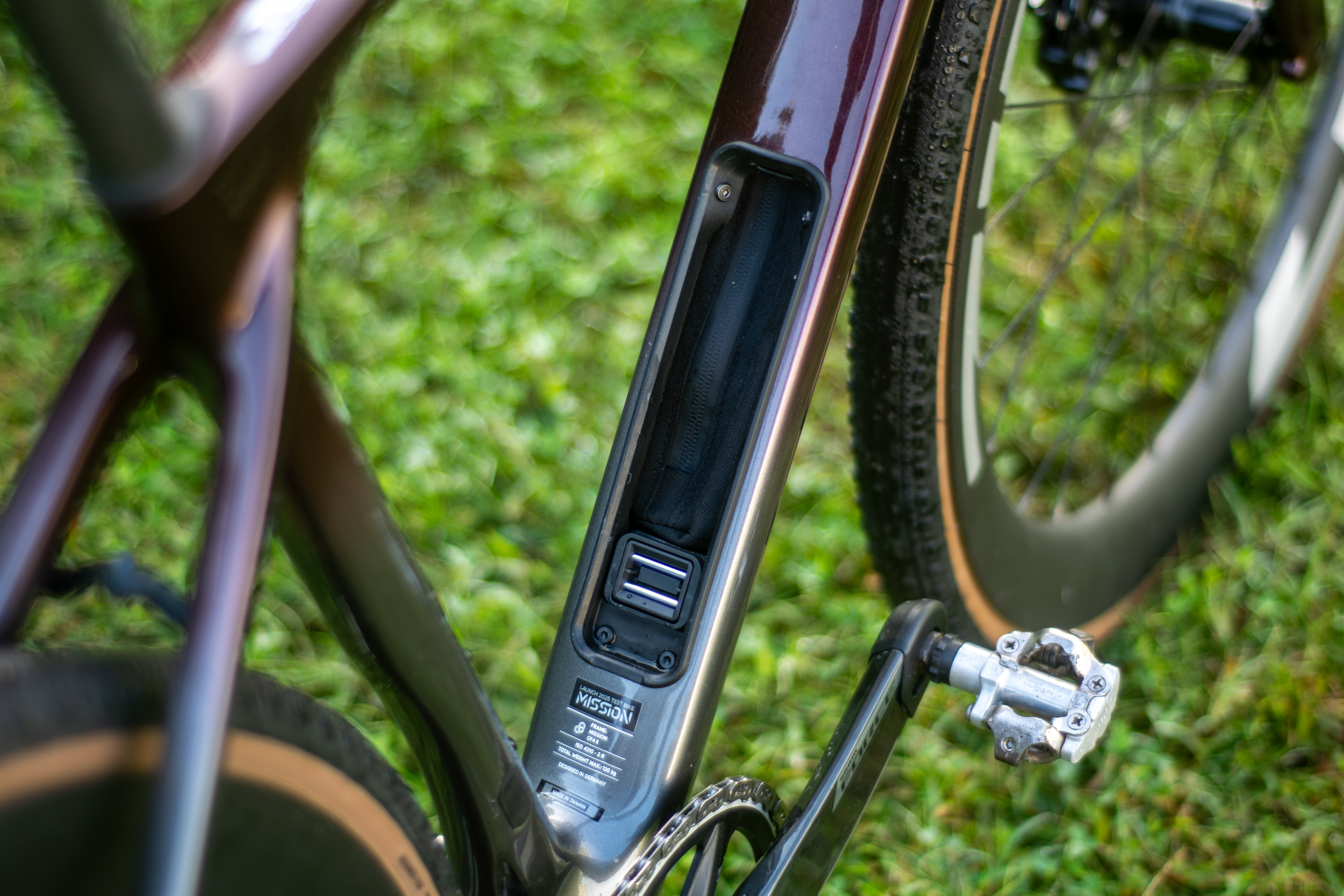
Specifications
I test rode the Mission 9000 model, one model down from the Halo spec 10K bike. All carbon frames in the range are of the same spec; there aren’t different carbon fibre grades like the recently released Scott Addict or Pinarello F Series bikes.
The 9000 comes with a big spec on its own. There’s the incredibly capable SRAM Force XPLR 1X13 groupset with left-hand crank arm power meter and 42T chainring. Rounded out the SRAM package are the Zipp 303 XPLR S wheels with super wide 32mm internal rims, with 40mm GoodYear XPLR Slick tyres fitted, this is the stock build for the 9000 model.
There's a Merida finishing kit comprised of a Team SL GR1P cockpit, which, as mentioned, I really liked. My own bar was 380mm wide with a 90mm stem. At the back, there's a Merida Team SL Carbon seatpost and Prologo Nago R4 saddle.
You can, of course, fit an out-front computer mount to the handlebars, and the G.U.T. frame storage comes with a neat bag included to store essentials in.
Lastly, one of the Merida thru axles has an integrated removable lever, meaning you won’t have to reach for a hex key when you need to remove a wheel, a useful feature at times.
For me, it’s a really solid spec; the only potential weak point for me is the GoodYear XPLR slick tyres. If you are riding on the road or so-called ‘champagne’ gravel, they will work for you, but I want more capable and ideally bigger rubber on my gravel machines.
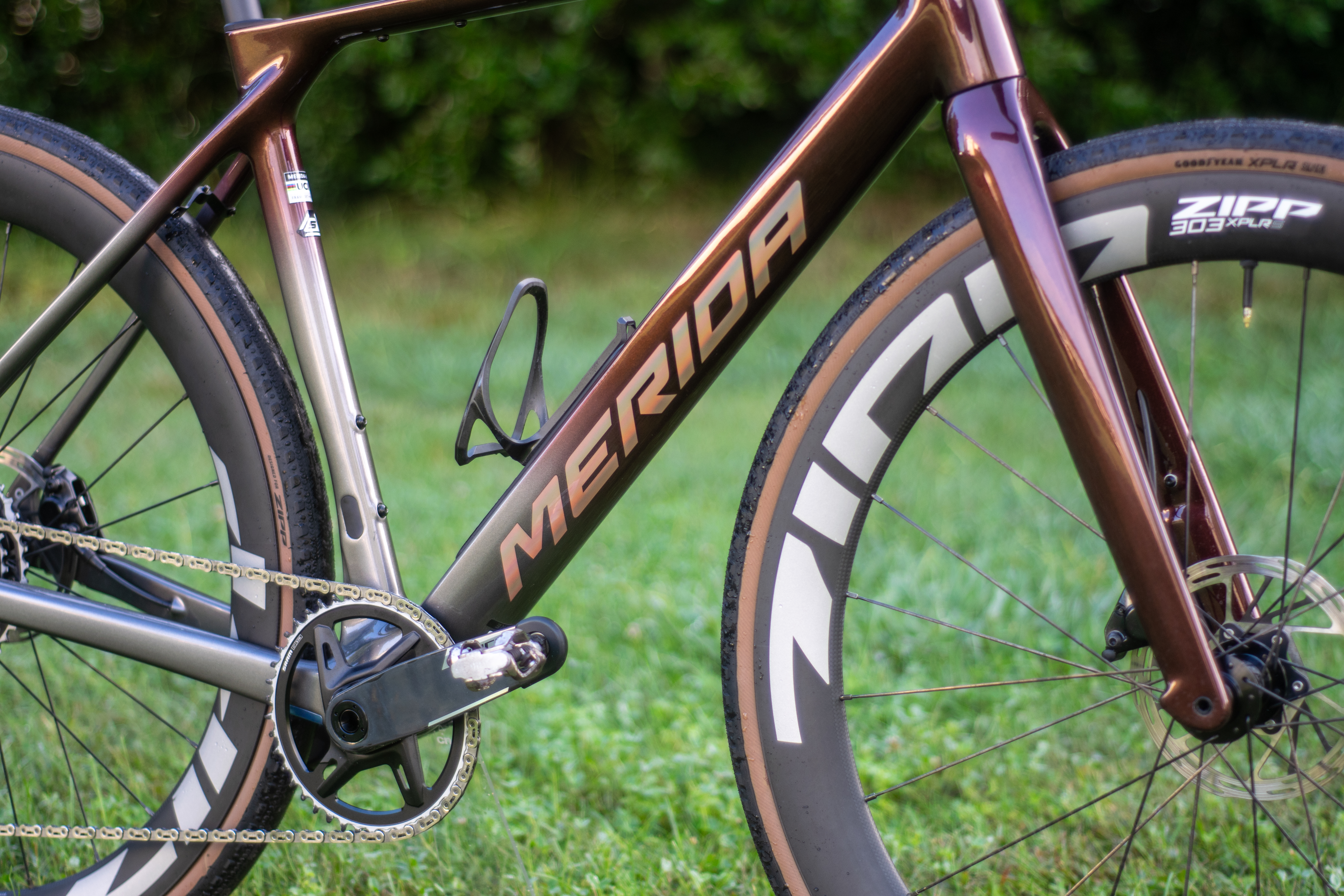
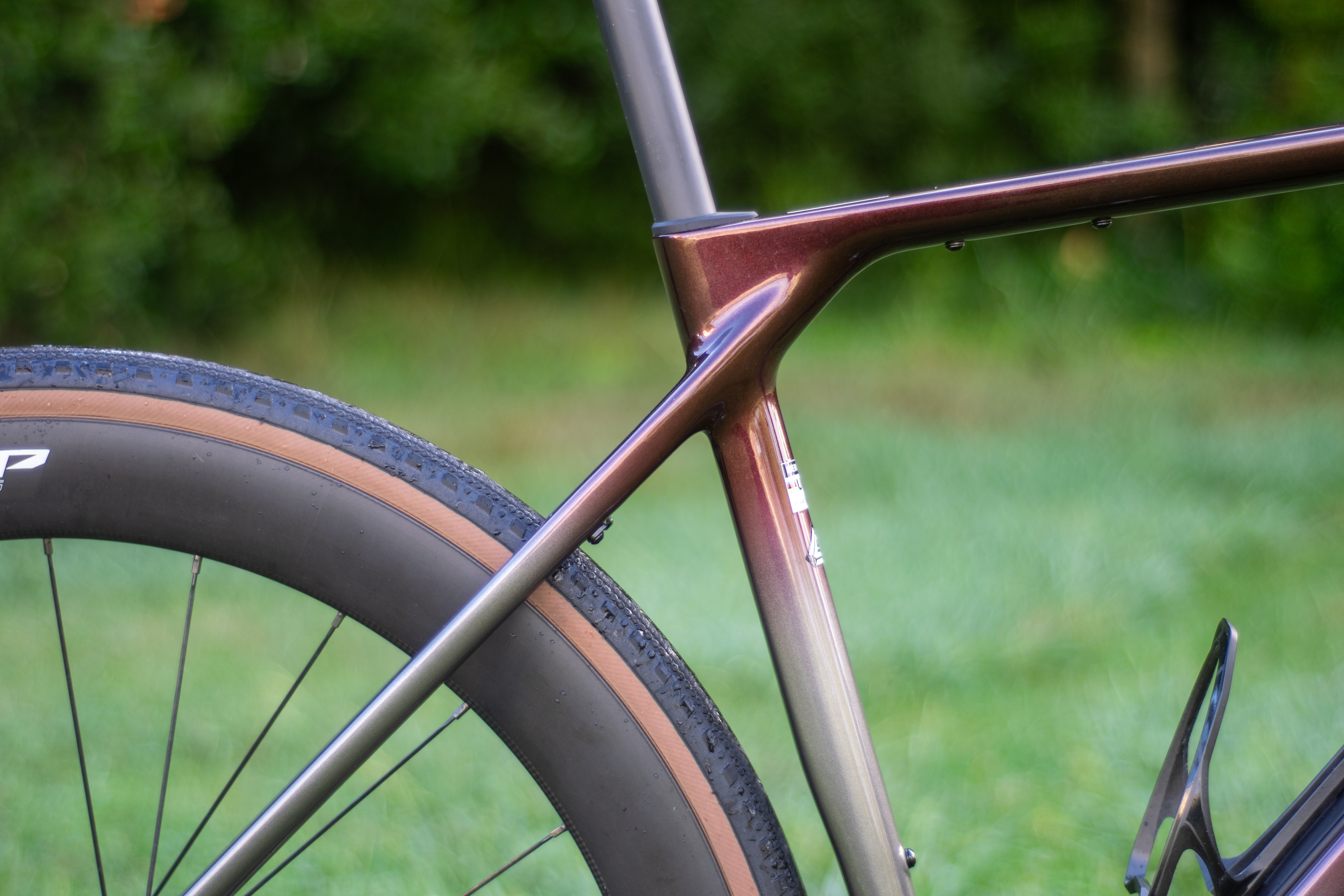
First impressions
I tested the Mission across two days in Girona towards the end of September, and it was an easy bike to figure out from the start. I revisited very similar terrain to what I covered when I raced the Traka 100 on the Canyon Grail RIFT back in May.
On faster, smoother gravel or on the road, the Mission feels fast and just downright road bike-like, which, as mentioned, is the direction of travel Merida is coming from with the bike, something the brand has been clear on.
The geometry and handling make it feel very nimble and reactive. With a 38cm flared integrated handlebar and a 90mm stem on my particular bike, front-end handling felt razor-sharp, almost to the point of nervousness on my first ride.
The bike gives you the feeling that it just wants to go, and the feedback it gives you as a rider encourages you to press on. It makes the ride exciting, and I really liked this.
Comfort-wise, the Mission wasn't bad at all. I think the handlebar helps smooth things to a degree up front, and my model had a healthy amount of post showing, which perhaps provided some flex. Only on rougher descents did I feel a good amount of feedback and chatter, which can be said of most rigid gravel bikes.
I was riding a size small, which fitted me well. Geometry-wise, in a small frame, the Mission has a stack of 555mm and a reach of 384mm, a head tube angle of 71 degrees, and a wheelbase of 1011mm.
To compare against two other good gravel bikes I have tested this year, the Mission is 18mm lower than the Canyon Grail and 10mm shorter, and 9mm lower than the Lauf Seigla and also 10mm shorter.
The geometry is also on a par with all-road bikes, and indeed, with slick road tyres fitted, this would also make a fantastic road machine. It has a very similar geometry to the Ridley Grifn RS, an all-road machine, and a bike I found to be adept on or off road, but with 42mm clearances.
SRAM XPLR groupsets are also near faultless off-road and boost performance on any gravel bike. I've talked repeatedly about how good the new generation of SRAM brakes is. My Mission's Force XPLR 1X groupset was excellent. If you are considering an AXS XPLR-equipped gravel bike, you will not be disappointed.
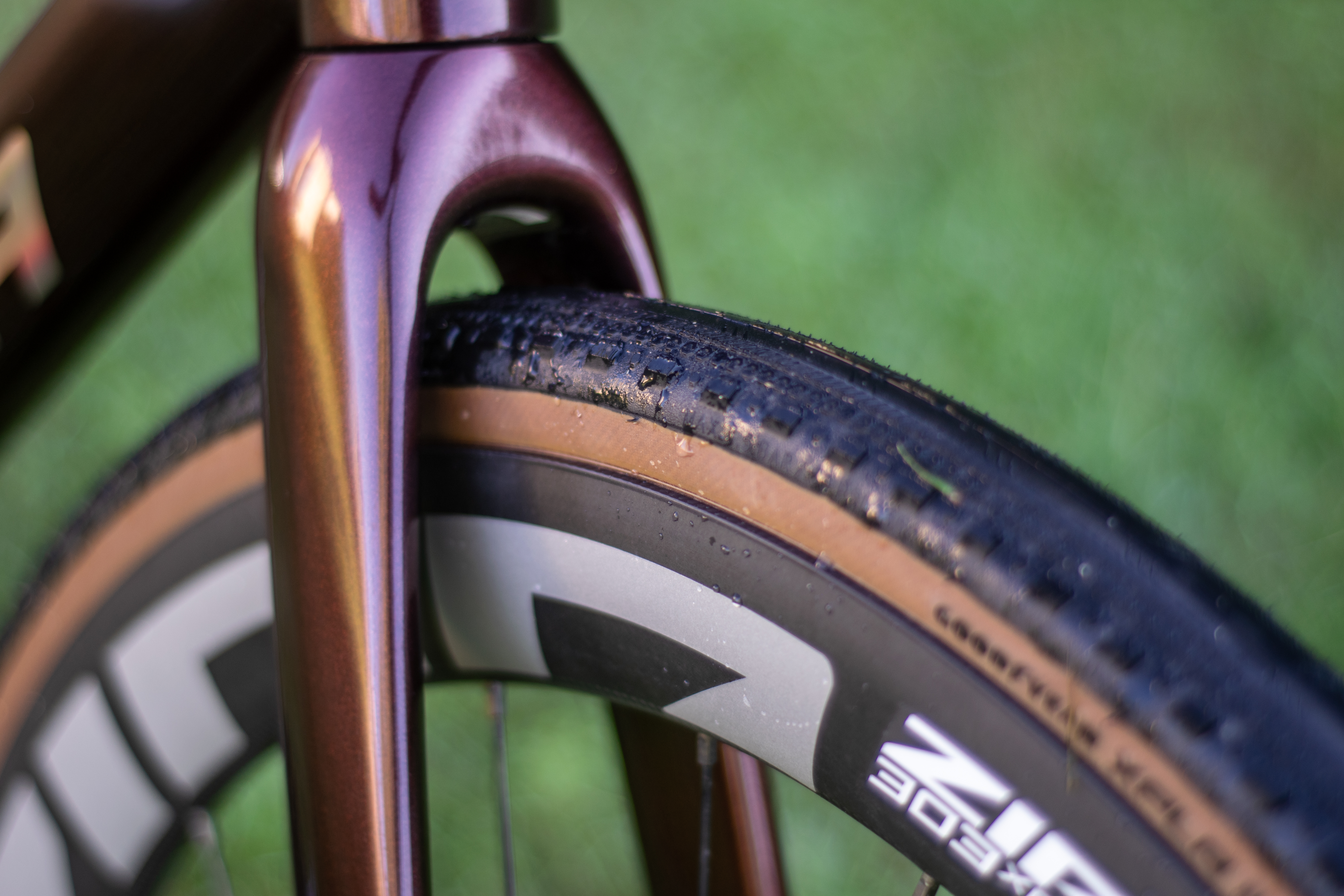

So, we have an exciting, fast-feeling bike to ride, which is great, but overall the riding experience was marred for me by the specific combination of the Zipp 303 XPLR wheelset and the 40mm GoodYear XPLR slick tyres.
Unless I knew I was riding or racing on very smooth, even surfaces or mixing fine gravel and road riding together, they would not be my choice. On some of the rougher, rockier Girona gravel tracks, they came unstuck. For context, none of the riding we did was what I would consider excessively rough or too much for a gravel bike, but it was too much for the bike in its stock spec.
The tyres are designed for racing on fast, smooth surfaces, which aligns with what this bike is about. I'm all for going fast, but I feel they limit the bike more than they aid it if you want to cover all sorts of different terrain, which I do. I also think the 303 XPLR rims generally suit larger-sized tyres a lot better, with their 32mm internal, hookless rims.
In Merida's defence, this is pretty much exactly what it says this bike is for, and tyres are easy things to swap. Pack a spare set of burlier tyres if you want my advice.
I would like to ride this bike with a larger volume tyre, which could be run at a lower pressure, boosting comfort and lowering vibrational losses. Extra clearance would also help in muddy conditions.
We dug into this in our CN Labs gravel tyre testing, and our results showed wider tyres to be faster. Out of the lab and in the real world, I have only had positive experiences with 45 and 50mm gravel tyres and even 2.2" Continental MTB tyres.
In this 40mm size, I had to ride carefully on rougher, rockier terrain whilst testing for fear of rim strikes and flats.
This is something the squarer Zipp XPLR rim walls seem to invite when paired with a smaller 40mm tyre, and the ride feel and rim impacts are different to anything I've felt on any other gravel wheels.
Our test group was plagued with numerous flats during testing, which seemed to come from either sidewall cuts or rim strikes. In the end, we cut the second day's gravel test loop short and span back on the road, which itself was a valuable test for the bike, and it was very fast and lively on the asphalt.
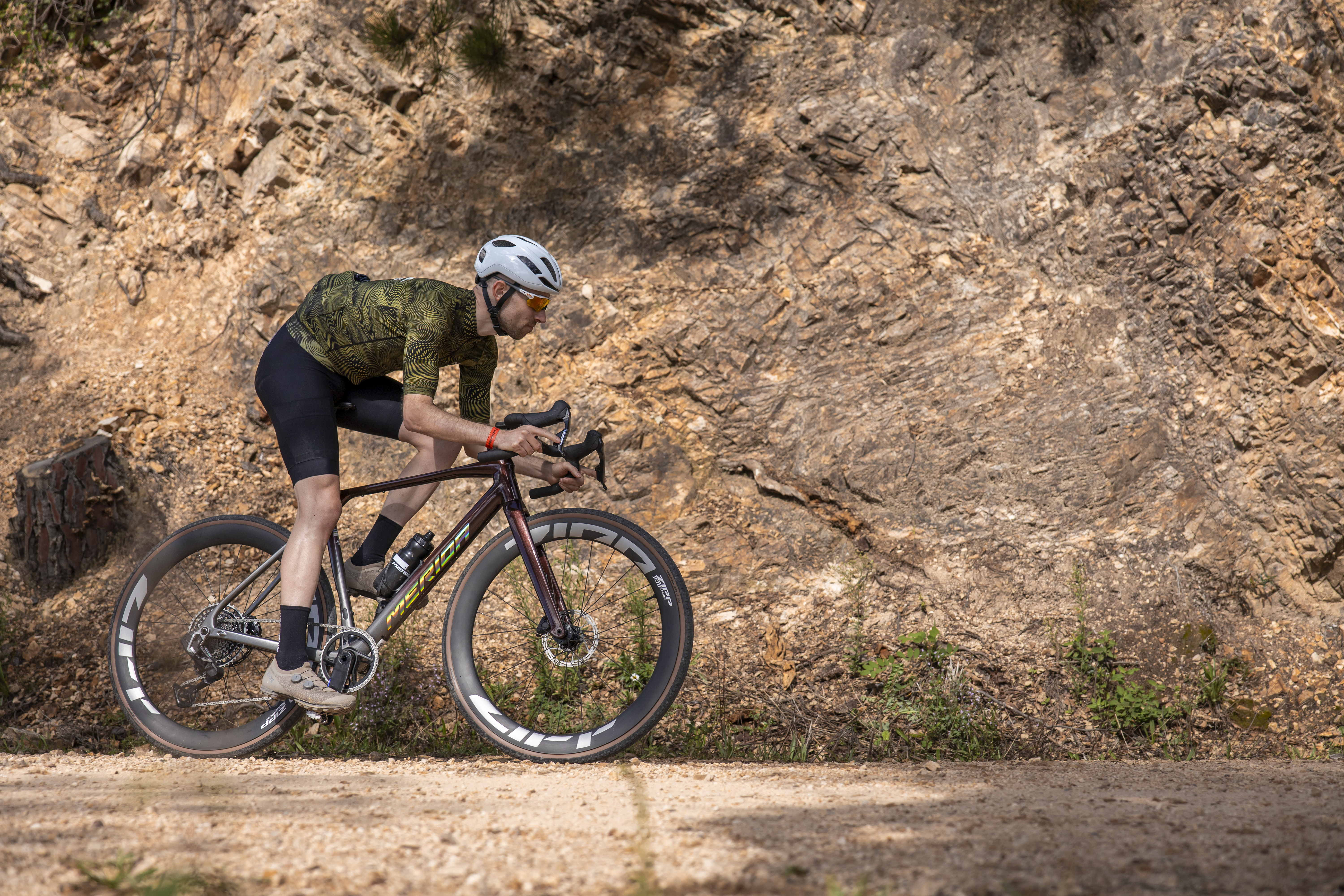
On our first ride, I felt a few good rim strikes on rougher sections when descending, and it's not my riding style to just smash through a section and pray. I would have liked to have run the tyres at lower pressures for more traction and comfort in areas, but then ran the risk of a rim strike and burping the rim and or flatting.
This is something I pointed out in my review of the 303 XPLR wheels at launch. I rode the wheels with 45mm tyres then and preferred that setup, but I noted the need to manage them in rough sections.
I nicked my own tyre sidewall, which resulted in a big loss of pressure, but I nursed the bike home. I set my pressures and stuck to 30PSI+ and avoided flatting for the second test ride, but the point is I had to compromise on my setup for fear of puncturing, and it limited my descending speeds. It was clear that pushing on rougher descents was not an option with this wheel and tyre combo.
If you get dropped on a descent in a race because you're managing your tyres to avoid a flat, you're at a disadvantage straight away. With all of that said, I felt the actual grip provided by the tyres, generally on dry, loose terrain, itself was decent, but I wasn't pushing hard.
My advice: save these tyres for race day, or flatter, very smooth gravel and terrain only, and invest in a second set of all-rounders with more protection and grip if you plan on buying the Mission as an all-around gravel bike or racing it on rougher courses.
Though the Silex may be the model for you if that is the case. I tend to want a fast feeling, racy gravel bike that I can still get rowdy on. Other models in the range do come with Continental Terra Speed rubber and Reynolds wheels, which may be a better all-around option.
I asked the brand about the punctures we experienced, and they cited the very rough terrain and the need to get your pressures correct with these wheels.
Elsewhere, there wasn't a hint of trouble from the Mission, and I enjoyed my time riding on it. The groupset, as mentioned, is excellent. I really like the handlebars' shape and feel, and I had no creaks, rattles or setup niggles to contend with anywhere.
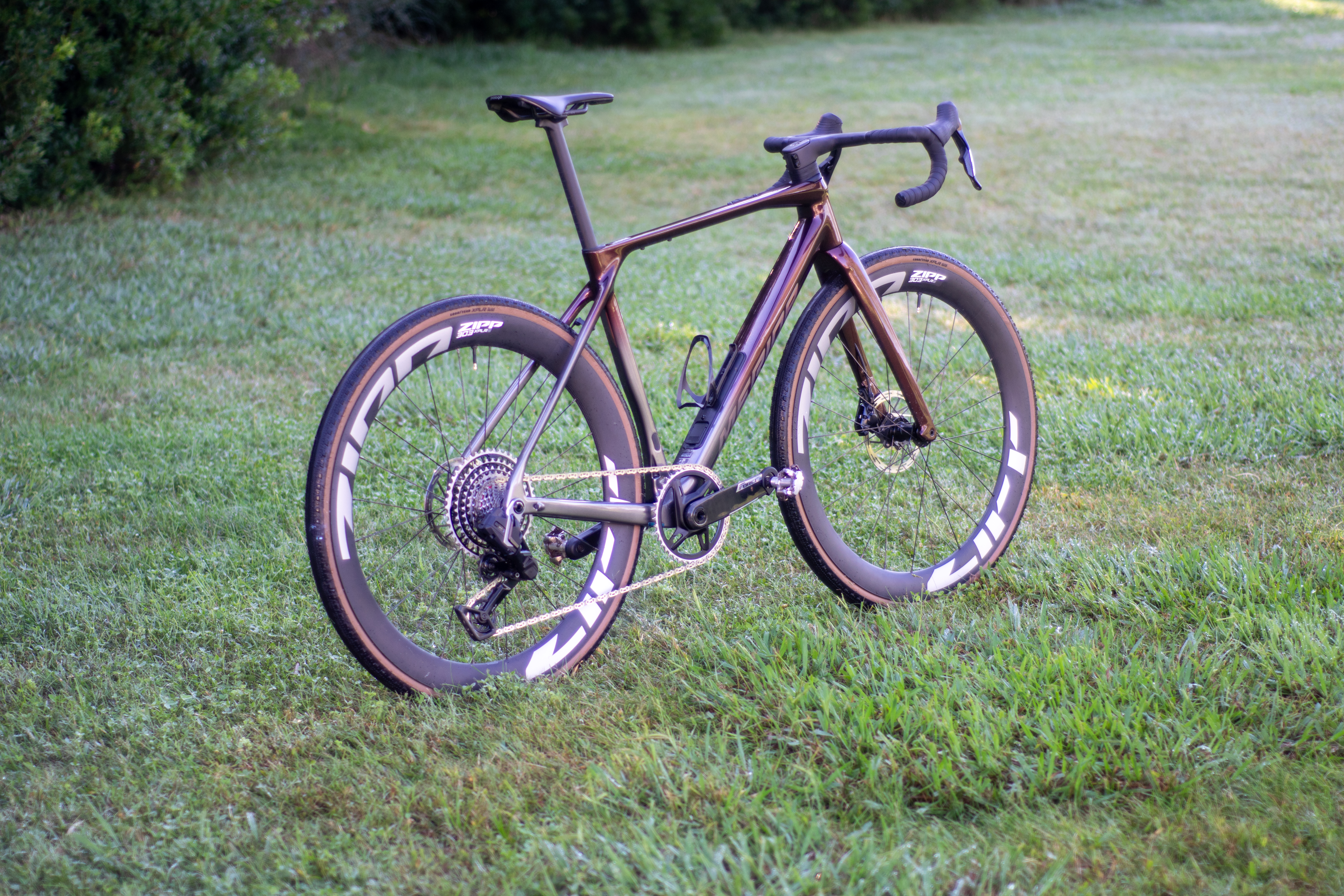
Initial verdict
The Mission is a very fun and engaging bike to ride. It also looks great, particularly the top two models with their deep-section Zipp XPLR wheels. I admired it in the early morning light as I took my photos.
I like the Mission, and I had a lot of fun riding the bike. I've been deliberating long and hard on what it's about. If you prefer to ride on the road and mix in finer, smoother gravel, this bike will put a grin on your face.
If, like me, you prefer to throw in more challenging, technical terrain on your gravel rides, or use one bike for a range of events, not just flat, smooth courses, you will at the very least need an alternate set of tyres. Perhaps this is just my own problem, but I can't help but fight a feeling of what might have been when it comes to the Mission.
I understand that this is the point where Merida would point me to the Silex or even an MTB. The Mission is clearly a bike for smooth, flat gravel, and mixing it on and off road, in particular with this wheel and tyre combo.
In its stock spec, the Mission 9000 is quite a specific gravel bike. To get the very best out of it, I would want to try an alternate pair of wheels and more aggressive tyres to see if I could enjoy its speed and exciting ride everywhere.

Tom joined the Cyclingnews team in late 2022 as a tech writer. Despite having a degree in English Literature he has spent his entire working life in the cycling industry in one form or another. He has over 10 years of experience as a qualified mechanic, with the last five years before joining Cyclingnews being spent running an independent workshop. This means he is just as happy tinkering away in the garage as he is out on the road bike, and he isn’t afraid to pull a bike apart or get hands-on with it when testing to really see what it’s made of.
He has ridden and raced bikes from an early age up to a national level on the road and track, and has ridden and competed in most disciplines. He has a keen eye for pro-team tech and enjoys spotting new or interesting components in the wild. During his time at Cyclingnews, Tom has already interviewed some of the sport's biggest names including Mathieu van der Poel, Tadej Pogačar and Alberto Contador. He's also covered various launches from brands such as Pinarello, Ridley, Specialized and more, tackled the Roubaix Challenge sportive aboard his own rim-brake Cannondale SuperSix Evo, tested over 20 aero helmets in the wind tunnel, and has created helpful in-depth buying advice relating to countless categories from torque wrenches to winter clothing.
You must confirm your public display name before commenting
Please logout and then login again, you will then be prompted to enter your display name.
